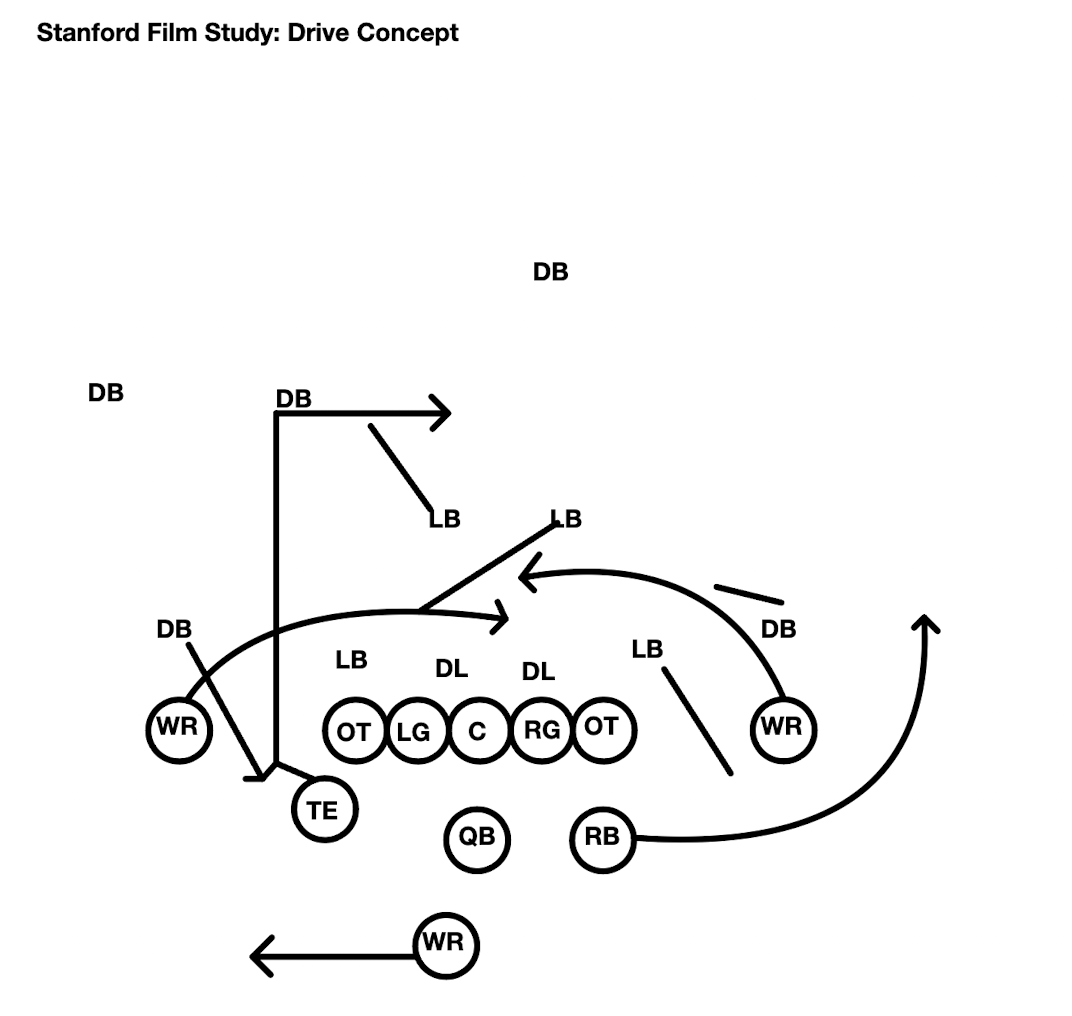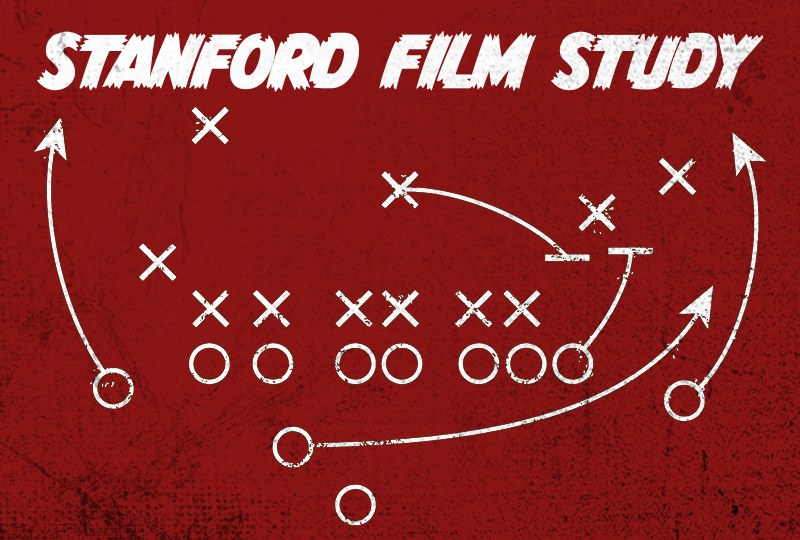The drive concept is another high-low passing concept that offenses utilize to attack linebackers that struggle in coverage. It can also be used as a decoy to open up more explosive downfield passing plays. This installation will examine Stanford’s use of the concept against Cal this past Saturday.
What is the drive concept?
The drive concept consists of a shallow drag route paired with a dig route. If the coverage is zone, the drag route can turn to a hook route so that the receiver can sit inside the soft spots of the zone coverage. Linebackers and rover defenders must either run across the field with a fast receiver on the drag, or lay off them and drop to cover the dig.
The quarterback must read where the key defender is going and make a read based on his movement. If the key drops back to cover the dig, the quarterback should look to the drag. Meanwhile, if the linebacker comes up to play the drag, there should be an opening for the dig route.
The concept is also employed to help vacate space on a side of the field to run screens and wheel routes. Against Cal on Saturday, Stanford utilized the drive concept during their first touchdown drive to get sophomore safety-turned-running back Mitch Leigber open on a wheel route.

Cal is running a matchup-zone during the play, and the cornerback defending junior wide receiver John Humphreys appears to have man-to-man responsibilities, since there’s only one high safety over the top. At the snap of the ball, Humphreys and fifth-year receiver Brycen Tremayne, who’s lined up in the slot, run drag routes to opposite sides of the field. Junior tight end Benjamin Yurosek pushes vertical and then stops to run a hard dig inside. While Humphreys’ man could pass the shallow route inside, it would be difficult on the linebackers because of the high-low from Tremayne and Yurosek. Meanwhile, Leigber leaks out to the vacated weak side and runs a wheel route.
The strongside linebacker takes on Yurosek, while the weak side linebacker takes Tremayne. With Humphreys taking his defender out from the weak side, this leaves an opening for Leigber to get the ball.
McKee floated the ball too far over Leibger’s shoulder, but the newly-minted running back was able to come down with a one-handed catch to sustain Stanford’s drive, and put the Cardinal in prime scoring position, which they later capitalized on.
